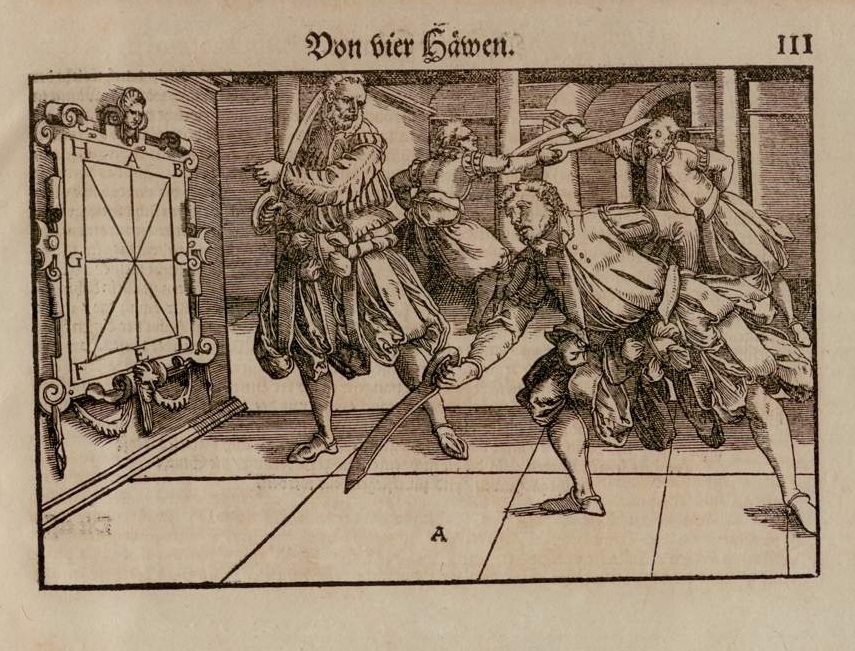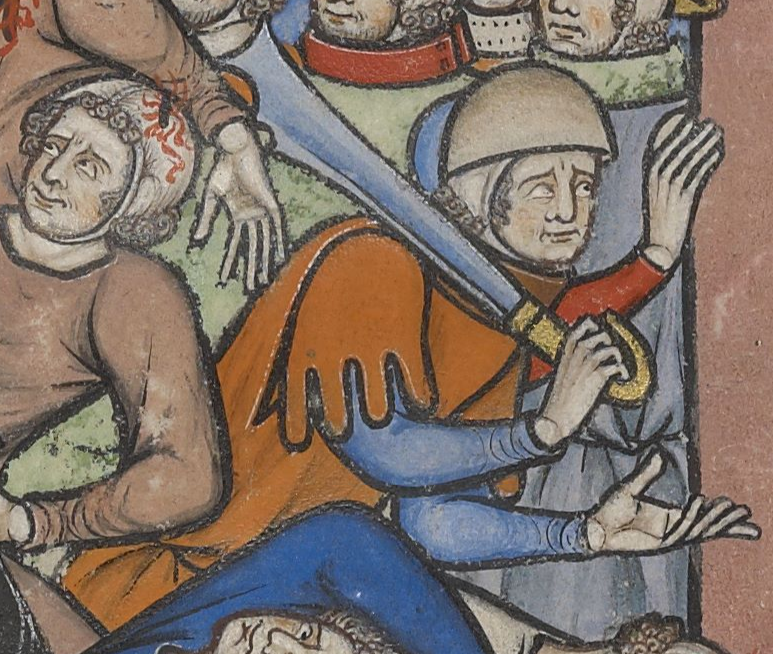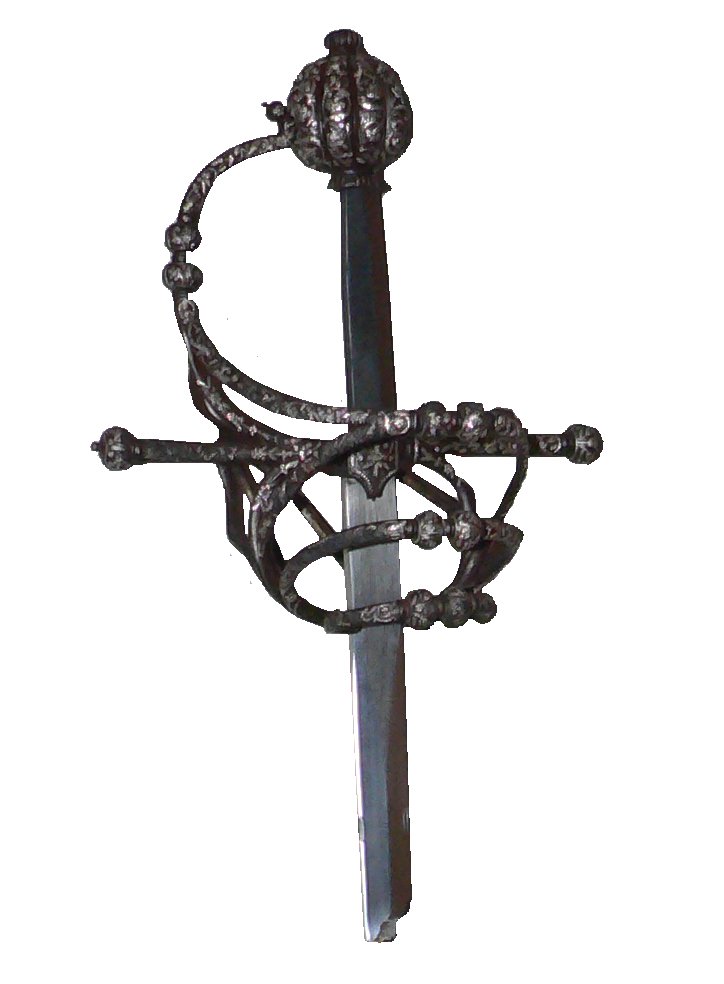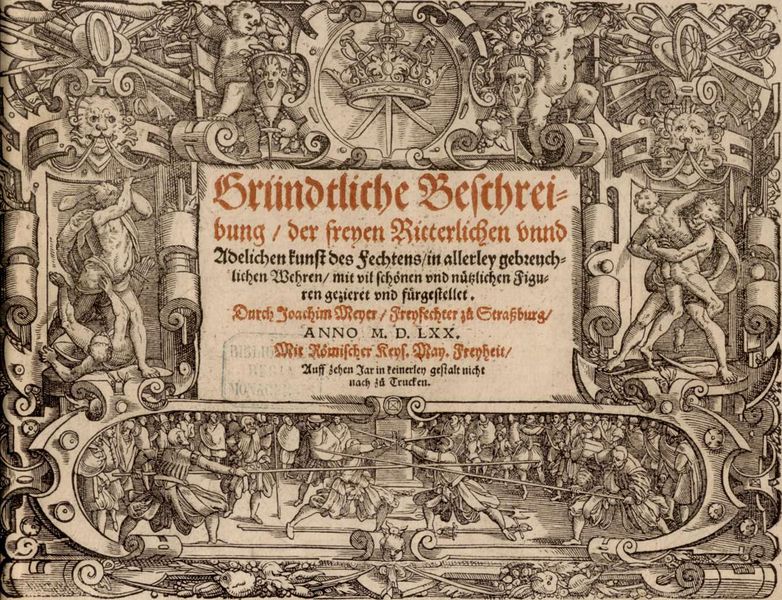|
Dusack
A dusack or dussack (also ''dusägge'' and variants, from Czech ''tesák'' "cleaver; hunting sword", lit. "fang") is a single-edged sword of the cutlass or sabre type, in use as a side arm in Germany and the Habsburg monarchy during the 16th to 17th centuries, as well as a practice weapon based on this weapon used in early modern German fencing. Military sidearm The Czech term entered German usage in the Hussite Wars, after the sidearm used by the Hussites. In the late 16th century, ''Dusägge'' could refer to a type of weapon combining a sabre blade with the hilt of a sidesword (the German ''Degen''), also known as ''Säbel auf Teutsch gefasst'' ("sabre fitted in the German manner"). The ''Dusägge'' in this sense was used as a military sidearm; e.g. in 1579, Styria records delivery of some 700 ''Dusäggen'' by local bladesmiths, besides payment of 40 ''Dusäggen'' delivered from Passau, as part of the preparation for the war against the Turks under Archduke Charles II. ... [...More Info...] [...Related Items...] OR: [Wikipedia] [Google] [Baidu] |
Falchion
A falchion (; Old French: ''fauchon''; Latin: ''falx'', "sickle") is a one-handed, backsword, single-edged sword of European origin. Falchions are found in different forms from around the 13th century up to and including the 16th century. In some versions, the falchion looks rather like the seax and later the sabre, and in other versions more like a machete with a crossguard. Types The blade designs of falchions varied widely across the continent and over time. They almost always included a single edge with a slight curve on the blade towards the point on the end and most were also affixed with a quilloned crossguard for the hilt in the manner of the contemporary arming swords. Unlike the double-edged swords of Europe, few actual swords of this type have survived to the present day; fewer than a dozen specimens are currently known. A number of weapons similar to the falchion existed in Western Europe, including the Messer (weapon), Messer, hanger (weapon), hanger and the backs ... [...More Info...] [...Related Items...] OR: [Wikipedia] [Google] [Baidu] |
Sabre
A sabre or saber ( ) is a type of backsword with a curved blade associated with the light cavalry of the Early Modern warfare, early modern and Napoleonic period, Napoleonic periods. Originally associated with Central European cavalry such as the hussars, the sabre became widespread in Western Europe during the Thirty Years' War. Lighter sabres also became popular with infantry of the early 17th century. In the 19th century, models with less curving blades became common and were also used by heavy cavalry. The military sabre was used as a duelling weapon in academic fencing in the 19th century, giving rise to a discipline of modern Sabre (fencing), sabre fencing (introduced in the Fencing at the 1896 Summer Olympics, 1896 Summer Olympics) loosely based on the characteristics of the historical weapon. Etymology The English ''sabre'' is recorded from the 1670s, as a direct loan from French, where ''sabre'' is an alteration of ''sable'', which was in turn loaned from German ''S ... [...More Info...] [...Related Items...] OR: [Wikipedia] [Google] [Baidu] |
Dussack 01
A dusack or dussack (also ''dusägge'' and variants, from Czech ''tesák'' "cleaver; hunting sword", lit. "fang") is a single-edged sword of the cutlass or sabre type, in use as a side arm in Germany and the Habsburg monarchy during the 16th to 17th centuries, as well as a practice weapon based on this weapon used in early modern German fencing. Military sidearm The Czech term entered German usage in the Hussite Wars, after the Sidearm (weapon), sidearm used by the Hussites. In the late 16th century, ''Dusägge'' could refer to a type of weapon combining a sabre A sabre or saber ( ) is a type of backsword with a curved blade associated with the light cavalry of the Early Modern warfare, early modern and Napoleonic period, Napoleonic periods. Originally associated with Central European cavalry such a ... blade with the hilt of a sidesword (the German ''Degen''), also known as ''Säbel auf Teutsch gefasst'' ("sabre fitted in the German manner"). The ''Dusägge'' in this ... [...More Info...] [...Related Items...] OR: [Wikipedia] [Google] [Baidu] |
German School Of Fencing
The German school of fencing (') is a system of combat taught in the Holy Roman Empire during the Late Medieval, German Renaissance, and early modern periods. It is described in the contemporary Fechtbücher ("fencing books") written at the time. The geographical center of this tradition was in what is now Southern Germany including Augsburg, Frankfurt, and Nuremberg. During the period in which it was taught, it was known as the ', or the ''"Art of Fighting"''. The German school of fencing focuses primarily on the use of the two-handed longsword; it also describes the use of many other weapons, including polearms, medieval daggers, messers (with or without a buckler), and the staff, as well as describing mounted combat and unarmed grappling (''ringen''). Most authors of writings on the system are, or claim to be, in the tradition of the 14th-century master Johannes Liechtenauer. The earliest surviving treatise on Liechtenauer's system is a manuscript dated to possibly t ... [...More Info...] [...Related Items...] OR: [Wikipedia] [Google] [Baidu] |
Norway
Norway, officially the Kingdom of Norway, is a Nordic countries, Nordic country located on the Scandinavian Peninsula in Northern Europe. The remote Arctic island of Jan Mayen and the archipelago of Svalbard also form part of the Kingdom of Norway. Bouvet Island, located in the Subantarctic, is a Dependencies of Norway, dependency, and not a part of the Kingdom; Norway also Territorial claims in Antarctica, claims the Antarctic territories of Peter I Island and Queen Maud Land. Norway has a population of 5.6 million. Its capital and largest city is Oslo. The country has a total area of . The country shares a long eastern border with Sweden, and is bordered by Finland and Russia to the northeast. Norway has an extensive coastline facing the Skagerrak strait, the North Atlantic Ocean, and the Barents Sea. The unified kingdom of Norway was established in 872 as a merger of Petty kingdoms of Norway, petty kingdoms and has existed continuously for years. From 1537 to 1814, Norway ... [...More Info...] [...Related Items...] OR: [Wikipedia] [Google] [Baidu] |
Passau
Passau (; ) is a city in Lower Bavaria, Germany. It is also known as the ("City of Three Rivers"), as the river Danube is joined by the Inn (river), Inn from the south and the Ilz from the north. Passau's population is about 50,000, of whom about 12,000 are students at the University of Passau, renowned in Germany for its institutes of economics, law, theology, computer science and cultural studies. History In the 2nd century BC, many of the Boii tribe were pushed north across the Alps out of northern Italy by the Romans. They established a new capital called Boiodurum by the Romans (from Gaulish ), now within the Innstadt district of Passau. Passau was an ancient Rome, ancient Roman colony called Batavis, Latin for "for the ''Batavi''". The Batavi (Germanic tribe), Batavi were an ancient Germanic tribe from area of the Rhine delta who frequently served in the Roman army as auxiliary troops. ''Batavis'' (Passau-Altstadt) was a Roman castrum in the province of Raetia, while a ... [...More Info...] [...Related Items...] OR: [Wikipedia] [Google] [Baidu] |
Messer (weapon)
A messer (German for "knife") is a single-edged sword of the 15th and 16th century, characterised by knife-like hilt construction methods. While the various names are often used synonymously, messers can be divided into several principal groups: A ''Bauernwehr'' ("peasant's knife" or "peasant's sidearm") or ''Hauswehr'' ("home/household knife") is a single-handed knife, used for utility and defence. Typical blade lengths range from lengths up to around . ''Messer'', ''Langes Messer'', and ''Großes Messer'' ("knife", "long knife", and "great knife" respectively) are usually single-handed swords used for self-defence. These blade lengths ranged from about to . Hilts are normally suited to single handed use, but the larger examples may feature extended grips suitable for a second hand-hold. ''Kriegsmesser'' ("war knife") are the largest examples of messer-hilted weapons, ranging from around long with approximately blade, up to around long with blades up to in length. ... [...More Info...] [...Related Items...] OR: [Wikipedia] [Google] [Baidu] |
Katzbalger
A () is a short arming sword, used in early modern Europe notable for its sturdy build and a distinctive s-shaped or figure-8 shaped guard. Measuring long and weighing , it was the signature blade of the ''Landsknecht''. Overview The is a side-arm, often used by pikemen, archers, and crossbowmen as a last resort if the enemy were to draw too close for bows or pikes to be effective. Mostly a cutting sword, the rounded tips on many examples are ill-suited to thrusting, while the flat, broad blades are specialized for cutting. As with other similar cutting-centric arming swords, it can still be used for thrusting, though it is only likely to do damage to unarmored targets. As with many sword varieties, variations exist within the type and katzbalger-style hilts can be found paired with slimmer and more thrust-oriented blades. The large, characteristic guard helps to block and parry other cutting attacks. However, its openings leave the hands vulnerable to thrusting attacks. T ... [...More Info...] [...Related Items...] OR: [Wikipedia] [Google] [Baidu] |
Hilt
The hilt (rarely called a haft or shaft) is the handle of a knife, dagger, sword, or bayonet, consisting of a guard, grip, and pommel. The guard may contain a crossguard or quillons. A tassel or sword knot may be attached to the guard or pommel. Pommel The pommel ( Anglo-Norman "little apple") is an enlarged fitting at the top of the handle. They were originally developed to prevent the sword from slipping from the hand. From around the 11th century in Europe, they became heavy enough to be a counterweight to the blade. This gave the sword a point of balance not too far from the hilt, allowing a more fluid fighting style. Depending on sword design and swordsmanship style, the pommel may also be used to strike the opponent (e.g. using the Mordhau technique). Pommels have appeared in a wide variety of shapes, including oblate spheroids, crescents, disks, wheels, and animal or bird heads. They are often engraved or inlayed with various designs and occasionally gilt and moun ... [...More Info...] [...Related Items...] OR: [Wikipedia] [Google] [Baidu] |
Joachim Meyer
Joachim Meyer (ca. 1537–1571) was a self-described Freifechter (literally, Free Fencer) living in the then Free Imperial City of Strasbourg in the 16th century and the author of a fechtbuch '' Gründtliche Beschreibung der Kunst des Fechtens'' (in English, ''Thorough Descriptions of the Art of Fencing'') first published in 1570. Works In 1570, Joachim Meyer wrote a comprehensive, multi-weapon treatise entitled '' Gründtliche Beschreibung der Kunst des Fechtens'' or, in English, ''Thorough Descriptions of the Art of Fencing''. It is seen as one of the most complete systems within medieval German martial arts. Meyer's book was reprinted in 1600, and may have been an influential source for other 16th- and 17th-century German fencing books, including a 1612 book by Jacob Sutor. His book mostly consists of descriptive text, with only a few dozen woodcuts, each of which depicts several players enacting various techniques described in the text itself. The book consists of ... [...More Info...] [...Related Items...] OR: [Wikipedia] [Google] [Baidu] |
Claude Blair
Claude Blair, (30 November 1922 – 21 February 2010) was a British museum curator and scholar, who specialised in European arms and armour. He is particularly known for his book ''European Armour: circa 1066 to circa 1700'' (1958). He worked in the Royal Armouries at the Tower of London from 1951 to 1956, before moving to the Department of Metalwork at the Victoria and Albert Museum, where he remained until his retirement as Keeper of Metalwork in 1982. He was active in church conservation, and served as a Vice-President of the Society of Antiquaries of London from 1990 to 1993. Early life and education Blair was born on 30 November 1922 in Chorlton-cum-Hardy, Lancashire, England. He was the only child born to William Henry Murray Blair (1875–1945), cotton-goods merchant, and Lilian Blair (née Wearing; 1891–1983). He was educated at William Hulme's Grammar School, a grammar school in Manchester. Following military service in World War II, Blair matriculated into the Uni ... [...More Info...] [...Related Items...] OR: [Wikipedia] [Google] [Baidu] |






